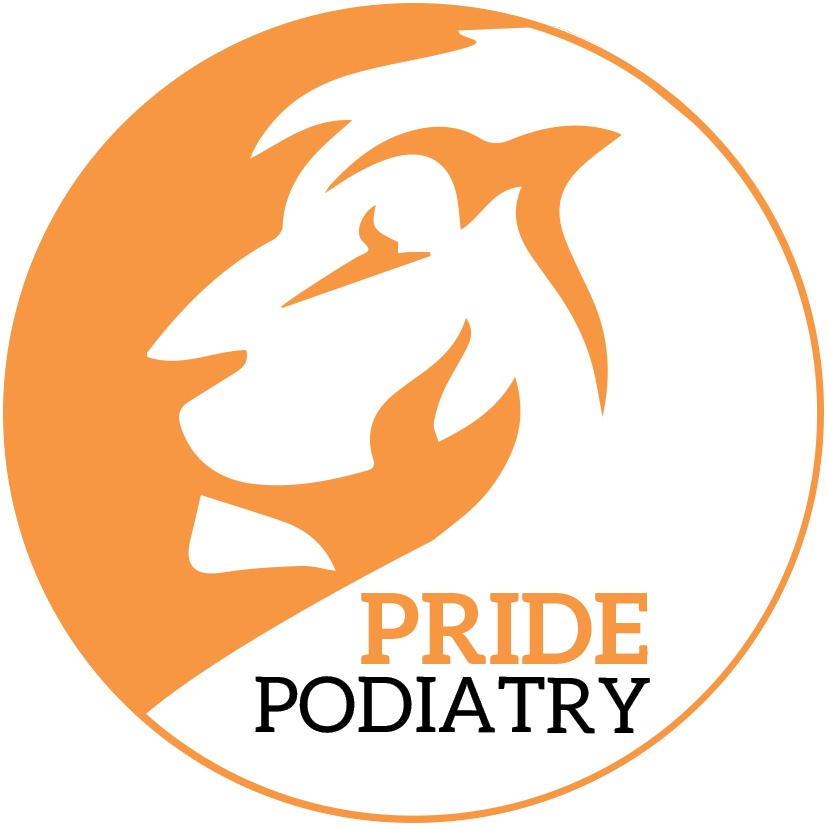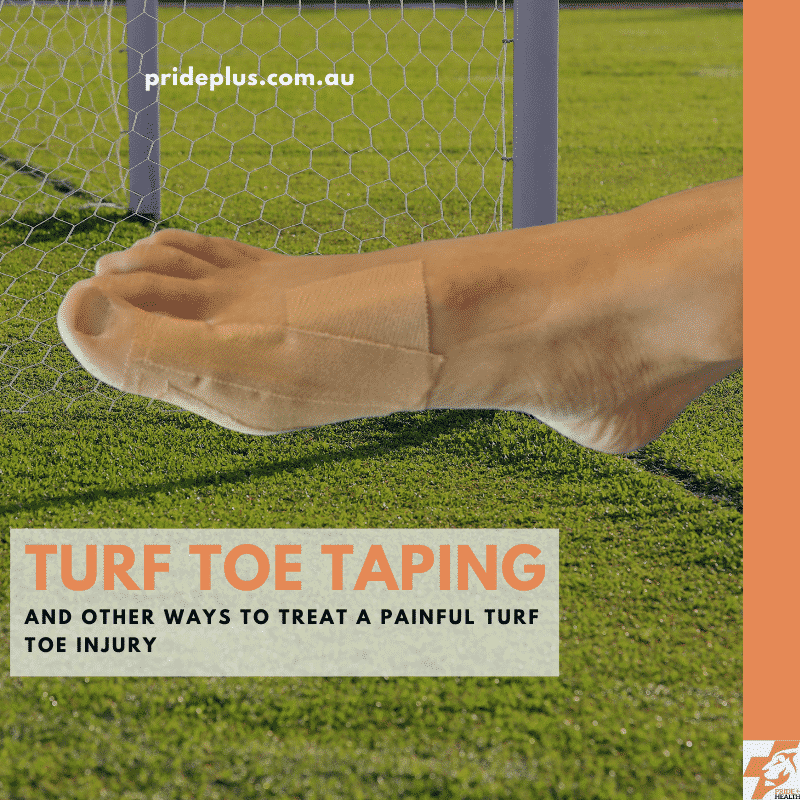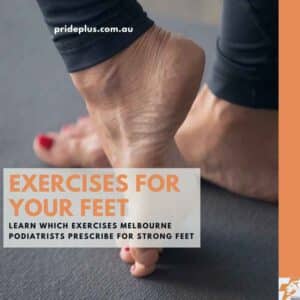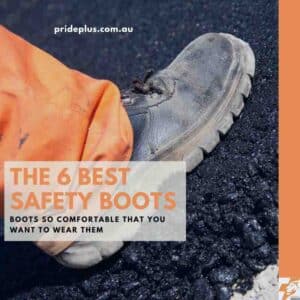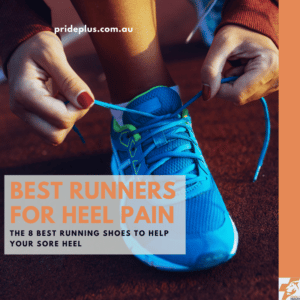A turf toe injury can be debilitating for athletes of all levels. It’s not ever fair. Some of us can get the painful condition without even playing on turf. Or competing at high levels, or even playing sports at all. So what is a turf toe injury? Why do they happen? How do we treat them (hint: with turf toe taping to start).
In this post our podiatry team will take you through the ins and outs big toe pain.
Big toe pain? Get your plan to get back to pain free activities from your podiatrist at PridePlus Health
What is Turf Toe
Turf toe is the more common name for an injury known as 1st metatarsophalangeal joint capsulitis (or synovitis). Considering how complex that is to write, remember and spell it’s no wonder we tend to go with the name turf toe!
The big toe joint, known as the 1st MTPJ (metatarsophalangeal joint) is the hardest working joint in your entire body. Yes, you’ve read that right. Your big toe undergoes around 8 x bodyweight of loading when you’re moving around. It’s not surprising then that with all this hard work it can sometimes say no more… and when that happens it could be the dreaded sore big toe.
So, the process of having a turf toe injury is when you’re asking the 1st MTPJ to do more work than it has the capacity to handle. It might be too much total load, too much twisting or too much springing. Whenever that limit is reached some small tears build up in the joint capsule which allows the slippery synovial fluid to escape from inside the joint. This process is usually painful and can lead to some local inflammation as your immune system tries to restore the natural order.
The name turf toe comes from the increasing prevalence of this injury when fake grass and astro turf became more common in the 1980’s.
With artificial turf and football cleats there was a huge increase in the torque (twisting) force around the 1st MTPJ. Turf toe went from an injury that happened to a few American Football players every year, to many many more.
More recent developments in field based sports shoes (football boots, soccer boots, cricket spikes and even golf shoes) have taken into the high loads on the big toe joint and there are moves afoot to reduce the rate of turf toe injuries with new stud patterns. But for now, if you’re reading this you probably have a sore big toe so let’s get on with the learning.
Turf Toe Symptoms
Turf toe feels like a sore big toe joint. It’s not to be confused with other painful conditions that commonly affect the 1st MTPJ like gout or sesamoiditis.
With turf toe you’ll likely have pain that is present each step. It might fluctuate a little with loading but otherwise be pretty consistent and sore. When you rest, either popping your feet up of an evening or having a spell on the bench your pain will usually reduce.
That pattern of pain is a little different from gout which tends to be more excruciatingly sore whenever there’s any light touch or movement of your big toe. This includes periods of rest and pressure from shoes or bedsheets.
Turf toe will often feel better when in shoes particularly if they are supportive and well fitting where you need them to be.
Causes
So we know turf toe is caused by overloading the big toe joint. You get that partial tearing of the joint capsule. But what specifically causes or contributes to it?
Here’s an exercise… As you’re reading wiggle your thumb up, down and then round and round in a circle… It’s really mobile and can in lots of different directions right? Well, your big toe like your thumb can move up and down, which is what we need for straight line movements. Your big toe can also do a bit of round and round movement too! Try it, although probably not a good idea with your sore big toe…
It’s a bit harder to actively move your toe in big circles isn’t it? But you can move it a little. Now, place just your toes on the ground and wiggle your ankles in a circle… Can you see how your big toe joint is doing that circular movement just like your thumb? Ah ha! You’re getting it now…
So when you move your toe up and down, there’s lots of strong muscles and extra bones (the sesamoid bone) to keep it stable and power you forwards.
But when you move around side to side, twist, cut and change directions your big toe doesn’t have quite as much support and protection and you can suffer a turf toe injury.
Things that can increase your risk of having a big toe injury:
- Footwear
- Poor cleat or stud pattern
- Poor support under your big toe (too flexible)
- Too much heel height
- Poor Stability
- Not enough strength from your balance muscle groups
- Surface
- Competing on high friction surfaces
- Activities
- Movements which spring or twist off the big toe
- Bowling in cricket, changing direction at speed, driving during golf
- Movements which spring or twist off the big toe
Diagnosis
A diagnosis of turf toe is usually a simple clinical diagnosis by your podiatrist. They’ll complete a thorough physical examination taking into consideration your foot shape, your joint range and quality of movement, your muscle strength and your symptoms. A thorough medical and sporting injury history will also be considered.
From there a hands on clinical palpation can exclude similar presentations (again, sesamoiditis or gout).
Imaging is rarely used for a diagnosis of turf toe however an ultrasound image will likely confirm a clinical diagnosis if required for peace of mind.
As a turf toe injury involves the joint capsule more than bones themselves plain film X-ray imaging is rarely useful.
How Turf Toe is Treated
These days big toe injuries are one of my favourite to treat. They respond very well to strapping in the short term and changes to footwear & orthotics are also very effective measures.
First up, here’s how you can use rigid sports tape to strap up a turf toe for immediate pain relief. You’ll need to make sure the tape is rigid so it can limit any excessive range of motion through your big toe.
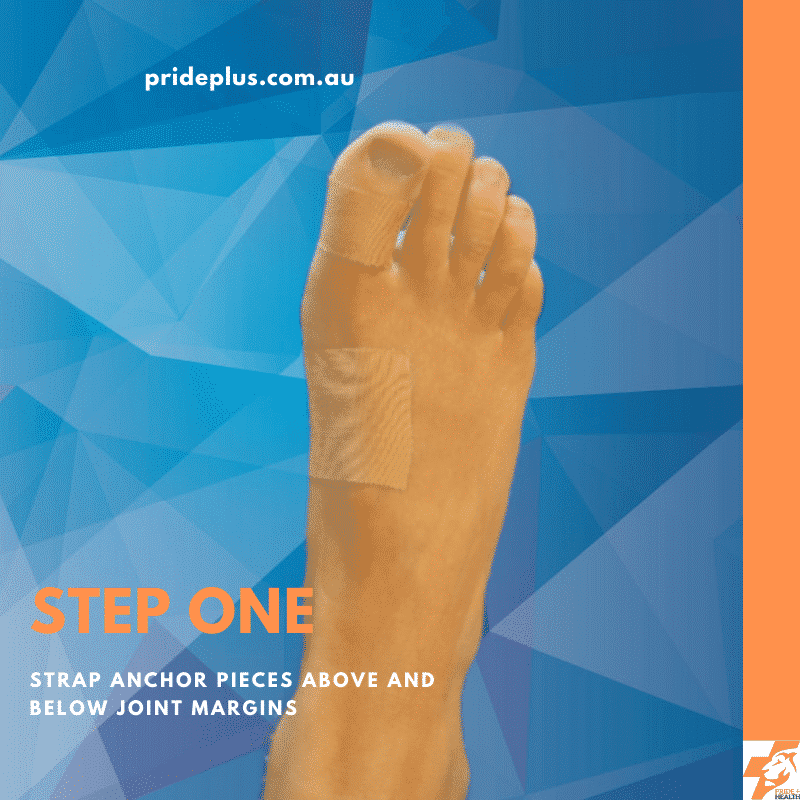

Footwear is the next line in turf toe treatment. As podiatrists and also for those who suffer with a turf toe we’re now spoiled for choice. In the past we had to use large, clunky and somewhat visible measures like CAM Walkers (moon boots) or post operative shoes to treat turf toe. With the modern trend towards footwear with a rocker sole under the 1st MTPJ and additionally extra support from carbon fibre plates we now have the option to go for sports shoes. Sometimes as the sole treatment modality!
Examples of shoes often used for turf toe injuries and other painful ball of foot conditions can be found here.
Finally, you can effectively use orthotics to change the loading on the 1st MTPJ to treat the pain in both the short and long term. For athlete’s looking to continue high loading activities getting an orthotic underfoot early can help.
As always, when considering if an orthotic is required for your injury you podiatrist will also likely advise you on an exercise program. Where orthotics push for support externally, muscles pull internally. With this in mind after symptoms start to reduce completing a strength and balance focus exercise program will likely be beneficial at preventing your turf toe injury from returning.
Related information about Turf Toe
One of the biggest men to ever play Aussie rules football, ex-docker Aaron Sandilands had a long battle with turf toe. When we consider that Aaron is a big man, and loading his big toe joint at 8 x bodyweight, then playing one of the most dynamic 3D sports it’s no surprise he battled with a sore big toe.
Keen foot followers will remember Aaron changing out of his footy boots and into modified basketball boots later in his carer.
Frequently asked questions about Turf Toe
Turf toe healing time varies depending on how long it’s been going on and how many things we can change. If we’re only able to change one variable, say strapping, but not shoes, orthotics, strength or activities it’s going to take longer than if we can address all of the above.
Big toe injuries will continue to hurt with varying degrees until the joint capsule is repaired and no longer being overloaded
Your podiatrist will advise you which shoes and when to wear them. For the most part it’s usually recommended to wear your supportive shoes more often when you have a big toe injury
The shoes which will help your toe injury heal the fastest will be just right for your feet. They’ll no only be a good fit, they’ll also have the support you need under the ball of your foot.
Your treatment rarely involves surgery as there are effective, active measures that can use. Utilising a combination of strapping, shoes, orthotics and exercises you can effectively manage most cases of turf toe.
A turf toe injury that is due to repetitive twisting of the big toe joint is very similar to the loading which can lead to a bunion forming. Bunion formation and the building of extra bone around the big toe joint happens slowly over many years, so if you have just suffered a one of bout of turf toe it’s not a sign that you’re going to get a bunion. It can be a good reminder to improve your foot health by completely the necessary twice weekly exercises and wearing good shoes where possible though.
Before you go
Your turf toe injury is no doubt frustrating, painful and limiting you from the activities you love. While you’re here, you will find helpful advice on the best shoes forefoot pain and learn whether an orthotic for ball of foot pain (which turf toe definitely is) will help you.
About the Author

Tim Mulholland is a podiatrist who cares deeply about getting the most out of your feet. It could be running a PB, or overcoming an injury. Tim will be your coach and your biggest fan as you achieve your goals.
